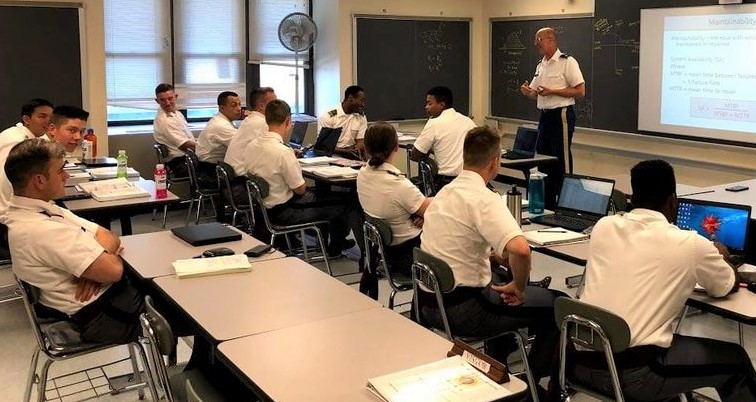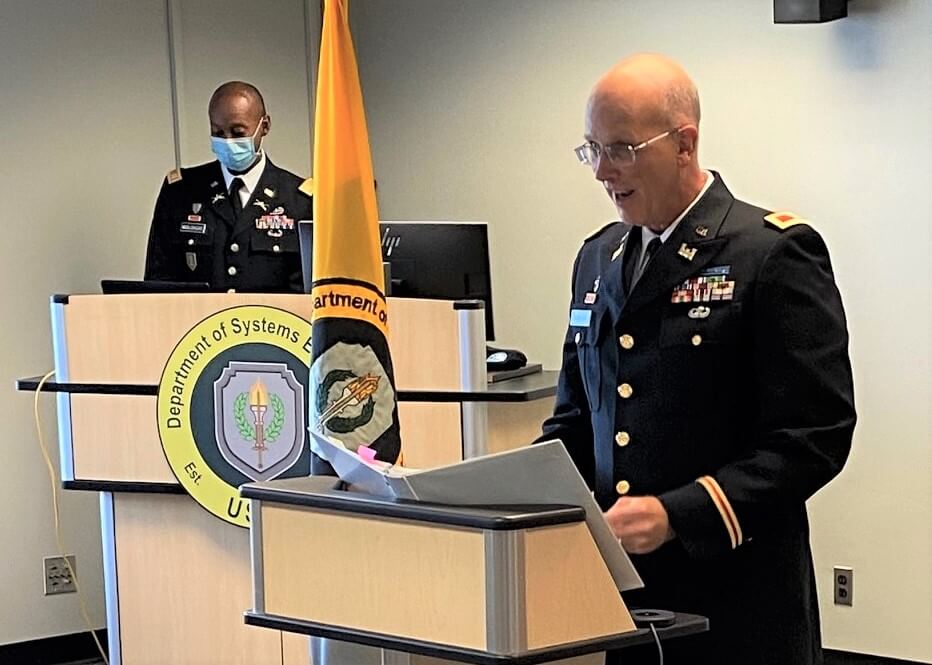Lanny Griffin can’t compel his Cal Poly students do pushups. But, as an Army officer, he can order the West Point cadets he teaches to drop for 20.
“I try not to exert any undue influence,” Griffin said with a chuckle. “But, yeah, I could. I think more often than not, you’re trying to be a sage on a stage. You bring perspective, humility, and wisdom from years of experience.”
Griffin’s status with the Army recently got a milestone boost when he was promoted to colonel – the highest ranking of any officer after generals, whose authority is designated by the number of stars on their uniform.
While Griffin’s promotion reflects 40 years of service to the military, he has also dedicated nearly a quarter century to Cal Poly, where he was instrumental in the formation of the Biomedical Engineering Department and where he has shared important military research projects with students and faculty.
“A lot of medicine has been advanced because of military medicine,” he said, citing treatment of burns as an example. “Because of advancements made in the treatment of burns – a result of the military’s experience with it in war time – a person who has up to 80 percent of their body burned has a good chance of survival.”
Griffin, who grew up in Colorado, began his education at the University of Wyoming in 1981. But he dropped out after a year.
“I was lacking direction and decided I wasn’t ready for college at that point,” he said.
Previously an Army Reservist, he enlisted full-time, serving as an infantryman in Hawaii.
“During that time, I gained a little insight,” he said. “My life took a different turn.”

After the Army, he continued to serve in the reserves as he worked as an administrative assistant for a Christian organization. Eventually, he returned to college as a full-time engineering student in 1989.
“I like fixing stuff,” he said. “I like mechanical and electrical things.”
While studying at Cal Poly, he developed an interest in composites and began to wonder how they might be used to make better hip replacements. Later, while pursuing a master’s degree at UC Davis, someone asked if he might take it further, exploring bone mechanics. He later went on to obtain a Ph.D. in Materials Science and Engineering.
Today, he’s an internationally recognized researcher on the topic.
After earning a doctorate at Davis, where he met future Cal Poly colleagues Scott Hazelwood and Joe Mello, he joined the faculty at Cal Poly, initially as a materials engineering professor. Eventually, with Dan Walsh and Bob Crockett, he would co-create the Biomedical Engineering Department, which he would chair for a time. Meanwhile, he continued his reserve duties, and in 2005, he was asked to teach at West Point, the U.S. Military Academy formed in 1802. As a professor of mechanical engineering there, he has spent several semesters on the East Coast, filling in for other faculty who were deployed or on other operational assignments.
While Cal Poly students and the West Point cadets are both naturally curious, there are differences, Griffin said. The cadets tend to be more diverse, and their environment is different.
“They spend four years where they have to do a complete set of military requirements in addition to their academic program,” he said.
“And then their life is very structured. Not everybody wants to live in that kind of structured environment.”
After schooling, the cadets have to serve, possibly in combat. Despite that life-threatening potential, West Point carries a prestige being among the top producing U.S. institutions of Rhodes scholars, whose alumni includes famous generals, including Ulysses S. Grant, Dwight Eisenhower and Douglas MacArthur, who have led the country to legendary victories on the battlefield.
“The students from Cal Poly do life-changing things as well,” said Griffin, a former Distinguished Scholar at Cal Poly. “They start companies, they invent life-changing technologies, they wind up as astronauts, to name a few”
Griffin is grateful to have also had an impact, both as a researcher and an educator on two separate coasts.
“I’ve been given the opportunity to influence the lives of people,” he said. “And I am grateful for that.”


